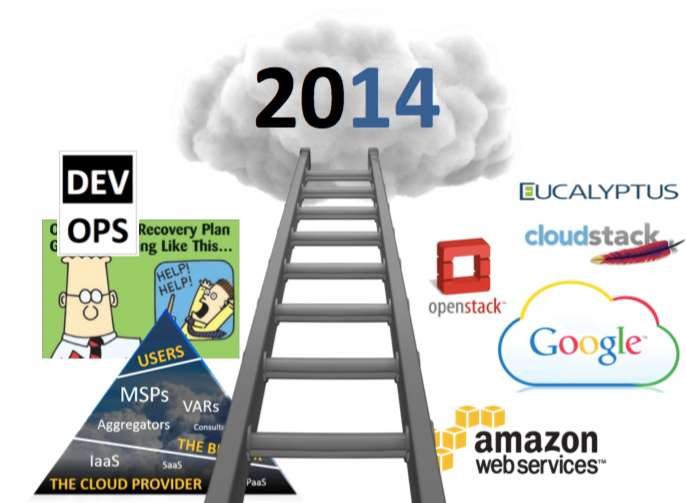Cloud Model 2014: Hybrid, Google, Brokerage, Startups and The Enterprise
 2013 has been incredibly eventful for the cloud industry, mostly for making itself an eminent presence in the mainstream IT market. Businesses of all sizes have made their ways to the cloud, confirming my 2013 predictions. Government agencies worldwide take the cloud seriously, as demonstrated by the CIA’s contract switch over to Amazon from IBM. AWS has proven its rapid pace of innovation and has introduced great leaders who have completely replaced the concept of sluggish IT servers with instances. While the market is still small, I believe it will take over the IT market sooner than some of us think. I am not alone in my forecast… another analyst predicted that AWS will become a $50B business in 2015, which means it will multiply 12 times its size from last year. So, have a look at my 2013 predictions and read on to see what 2014 has in store for the world of cloud computing. (more…)
2013 has been incredibly eventful for the cloud industry, mostly for making itself an eminent presence in the mainstream IT market. Businesses of all sizes have made their ways to the cloud, confirming my 2013 predictions. Government agencies worldwide take the cloud seriously, as demonstrated by the CIA’s contract switch over to Amazon from IBM. AWS has proven its rapid pace of innovation and has introduced great leaders who have completely replaced the concept of sluggish IT servers with instances. While the market is still small, I believe it will take over the IT market sooner than some of us think. I am not alone in my forecast… another analyst predicted that AWS will become a $50B business in 2015, which means it will multiply 12 times its size from last year. So, have a look at my 2013 predictions and read on to see what 2014 has in store for the world of cloud computing. (more…)


 Last week I was invited to the
Last week I was invited to the 